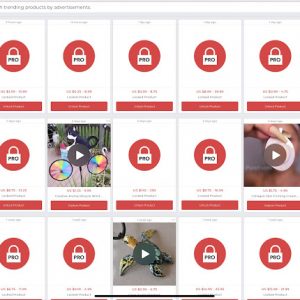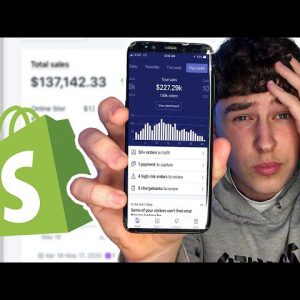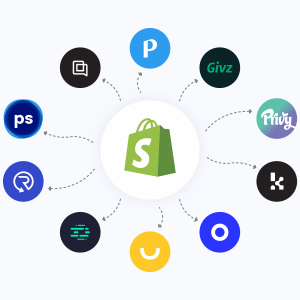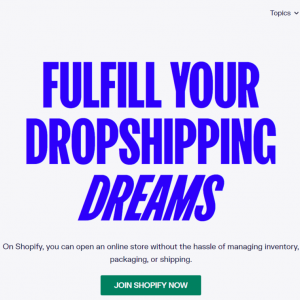So you’re looking to make money online and have started selling on Amazon. Now you’re ready to take your Amazon business to the next level—perhaps even take it from side hustle to full-time income.
You’ve got two ways to grow: either you reach more people (and sell more products), or you squeeze more revenue from the products you’re already selling.
Amazon can help shoppers discover your brand, and it’s a great additional sales channel for your Shopify store.
Here are eight easy strategies for marketing/boosting your product and maximizing revenue.
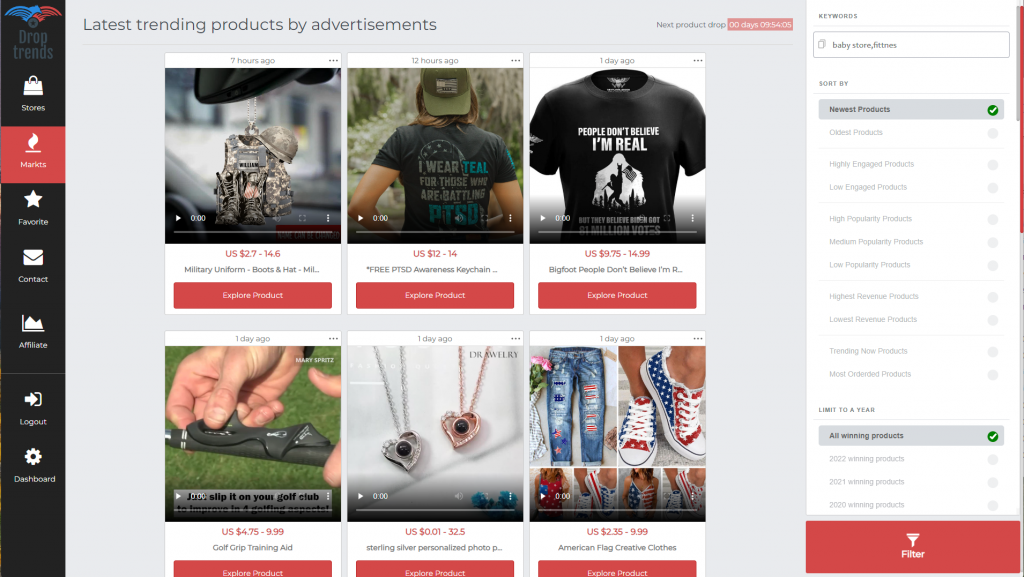
1. Bundle products together
Product bundling is one of the great ways to make money on Amazon, helping you boost average order value so you can increase profit margins without having to make more sales. Bundling is when you promote two or more products for purchase together as a single item. Oftentimes, merchants will offer a discount for product bundles.
Dirty Labs, for example, sells nontoxic laundry detergent products. It has a liquid soap available in two scents and a laundry booster powder—all three are available for purchase individually on its Shopify and Amazon stores. Dirty Labs also bundles the products so shoppers can purchase both detergents or a detergent and the booster together in a single shopping cart item.

When considering which products to bundle together for Amazon, look at your analytics to see which items are most often purchased together. You can then bundle those products together for an easy win—for both you and your shoppers.
If you’re selling product bundles, make sure you have everything tightly integrated so you can account for inventory on Amazon, your Shopify site, and anywhere else you sell. For example, if you sell out of one of the products in the bundle, you’ll want to make sure customers aren’t still able to purchase the bundle.
2. Negotiate discounts with your supplier
One way to boost profitability without increasing sales is to reduce your cost of goods sold (COGS)—and a great way to do that is to negotiate directly with your wholesale suppliers.
Though suppliers may have pricing structures, these are almost always open to negotiation. Don’t be afraid to push back if the numbers don’t work for your budget.
You can get extra leverage if you place large or frequent orders. Remember, much of business is built on relationships. If you can maintain a positive working relationship with your suppliers, you’ll have an easier time conducting a transparent conversation about pricing. Ask what you can do to make their job easier so they can provide you with a discount that meets your needs.
3. Optimize your product listings and titles
There are millions of products and merchandise items available for purchase on Amazon. With all that competition, it’s critical to use your product listings and titles to stand out and grab shoppers’ attention.
- Titles matter: Make sure your product title clearly describes what the item is and if it matches what someone’s looking for. Include your brand name, product use case, and primary benefit, if you have enough space. Remember to be detailed but brief.
- Bullet points are your elevator pitch: Make sure to hit all of the key questions that customers need answered before they have to scroll below the fold on desktop or mobile. Mention key facts about product warranties or customer service available to troubleshoot issues. Since most customers are skimming this section, avoid bullets that are more than three lines long.
- Photos are crucial: Your main product image should clearly show what the product is before zooming or panning in. Additional product images should provide more angles of the product and a mix of contextual lifestyle imagery. You might also need to provide graphics or images of specific features, ingredients, or sizing information.
- Product descriptions matter too: Remember that customers are skimming, so a 10-line long paragraph probably won’t do the job. Use your brand voice here and reiterate key selling points while mentioning any supporting facts that can help customers understand why they need to buy now.
Here’s an example of a detail page before the Amazon seller updated key items to optimize conversion rate. Notice the short title, confusing photo, and rambling product description.

Now, here is the same product detail page after several updates. Notice that the title includes important product details, while the photo and description have been updated to offer a clearer sense of Dream Water’s features and benefits.

Here are some other important considerations when setting up or updating detail pages:
- Avoid keyword stuffing: While it’s important to use terms that will help you rank for your category in Amazon search, avoid bad SEO practices like pumping your pages full of relevant words and phrases. Instead, consider them from your customers’ perspective. What information do they need to be convinced this item is worth purchasing?
- Check your pages regularly: Amazon thrives on user-submitted content like reviews, questions, and product images—and so do consumers. In fact, many visitors spend more time reading customer questions and reviews than a brand’s own product information. With that in mind, be sure to regularly check customer questions and reviews for any gaps in your detail page content, as well as opportunities to respond to any concerns and address any confusion.
4. Get your pricing right
Finding the right pricing strategies for your products is tough enough as is. Add Amazon’s complexities and an open online marketplace for third-party sellers to compete, and you have quite a handful. Amazon associates pricing with your product category page and search visibility—if your prices are too high, you’ll likely be pushed further down in the results. But with some key considerations in mind, you can price your products competitively while maintaining healthy profit margins.
- Remember the Amazon Marketplace Fair Pricing Policy: Amazon used to have a pricing parity clause that said you couldn’t sell items at a lower price anywhere else. It has since replaced that rule with the Amazon Marketplace Fair Pricing Policy. This states you can’t use prices “that harm customer trust.” Amazon offers some examples of pricing practices that raise red flags, including using misleading reference prices, pricing significantly higher than recent prices offered on or off Amazon, selling bundles or multiple units for a higher price-per-unit than if sold individually, and adding excessive shipping fees. Avoid a potential account suspension for not following this policy.
- Win the Buy Box: The Buy Box, or Amazon’s Featured Offer, is a coveted position for new products because it gives extra visibility on search results pages. Since Amazon is an online marketplace, you may very well be competing against other third-party sellers for first position on the list of sellers for your product. Amazon recommends logging in to your seller account and checking the Manage Pricing page to see what the Featured Offer is, and also your Pricing Dashboard to check competitive pricing and how you stack up. It also has a Selling Coach Pricing report that you can reference for recommendations on your own pricing strategies.
Beyond setting your base prices, you’ll also want to consider sales and discounts. Such promotions are a great way to increase visibility and gain reviews. Lightning Deals, price discounts, best deals, coupons, buy one, get one offers, etc. are all opportunities to offer and highlight a temporary discount to your product.
Keto snack brand HighKey uses a limited-time discount on its vegan chocolate chip cookies. When you search Amazon for this type of product, the HighKey listing stands out with its promotional pricing.

Remember to factor in Amazon fees when you consider how much markup to add to your pricing. While it’s important to price competitively, you need to account for additional expenses to ensure you’re still turning a profit.
TIP: These pricing rules and policies apply even if you resell items you’ve purchased offline—a practice referred to as retail arbitrage.
5. Share product listings on social media
Many brands point all of their digital marketing efforts to their ecommerce store or domain. While there’s obvious value in directing traffic to your own site via Facebook ads, Google ads, PR campaigns, and other paid channels, the same tactics will also work to promote your Amazon products. One of the easiest, cheapest, and potentially most effective places to start driving external traffic is your existing social media presence.
When launching social media campaigns to market your Amazon products, keep the following tips in mind.
- Start with your most active channels: If you’re wondering whether to advertise on Instagram or TikTok, remember that when it comes to social media marketing, the most effective channels are the ones you’ll actually use. For best results, start by leveraging the social networks where you’re most active and have the most followers, then grow from there.
- Use interactive posts: To drive followers to your Amazon product page, you’ll need to create engaging social media ads and posts that call users to action. Short videos, carousel ads, discount coupons, and contests or giveaways are all proven strategies for driving social media traffic to your Amazon listings.
- Connect with influencers and affiliate marketers: If you don’t have a significant audience of your own, consider using the Amazon affiliate program or Amazon Influencer Program to increase your reach. Bloggers, vloggers, and other kinds of social media influencers use these Amazon services because they can collect an affiliate commission on any customer purchases that come from their custom link.
Learn more: Amazon Handmade vs. Etsy: Pros and Cons for Sellers
6. Encourage product reviews
It’s no secret that reviews are crucial to the success of any ecommerce retail business. Most of us have bought something on Amazon, and in many cases our decisions likely came down to which product had better reviews. Furthermore, reviews on Amazon will have an impact on other channels, including your Shopify site, since customers tend to do research on Amazon first.
Pura Vida Bracelets has plenty of products on Amazon, most of which have lots of reviews. These customer reviews include text as well as photos and provide social proof that the products are as great as the brand says they are.

To drive more Amazon product reviews, follow up with customers via email. Amazon sellers are allowed to send post-sale emails to customers pertaining to a specific order, and there are several automated services available to help you manage this process.
Remember: Amazon prohibits seller emails with marketing or promotional messages, links to external websites, or offers of incentives for positive reviews. But you are allowed to send a series of emails confirming the customer has received their order and requesting their feedback on your product.
There are tons of best practices out there, but we recommend starting with two emails: one to confirm receipt and/or shipment of the order, and another a few weeks after the customer has received their Amazon product. Avoid writing spammy or aggressive emails, and give customers an opportunity to share negative feedback with you privately before writing a bad review.
Learn more: Early Access: Shop Product Reviews For Building Brand Equity
7. Launch a Lighting Deal
Promotions including Lightning Deals are a great way to sell units at an increased velocity, ultimately leading to more reviews. Lightning Deals are flash sales that are featured on the Amazon deal page, one of the most frequently visited pages on Amazon.
Not only do they help increase discoverability of your product, they also help you increase sales during the limited-time sale and even after the deal is completed. This is because you often increase your rank and search relevancy due to the increased units sold during that flash sale, and this carries over for a period of time once the deal completes, sometimes for several weeks.
For big events such as Prime Day and during the holidays, Lightning Deals can be very successful in selling hundreds to sometimes thousands of units in the period of a few hours and also can help new customers discover your brand, even if they don’t buy immediately.
The goal isn’t to always be on promotion or providing deep discounts, but if you can sprinkle these in occasionally, including toward the beginning of your product lifecycle on Amazon, it’s a great way to gain additional reviews and build relevancy so other customers can find you.
Lightning Deals run across many different categories, including health and personal care, home and kitchen, consumer electronics, fashion, grocery, and much more. Again, this is a great way not only to sell units in the short term but also to trial products and to win new customers for future purchases.
8. Cross-sell your products on Shopify
Shopify’s Amazon sales channel makes it easier than ever to list your products on the world’s largest marketplace and get your brand in front of millions of Amazon shoppers.
Learn more: How to sell on Amazon
And with Fulfillment by Amazon (or Amazon FBA), you can store inventory at and fulfill orders from an Amazon fulfillment center. Before you set this up, you’ll need to have an Amazon Seller Central account. Shopify merchants can create Amazon product listings directly in Shopify, sync inventory across both sales channels, fulfill Amazon orders in Shopify, and track sales from both channels in one place.
You can also sync all your sales data across other channels, including sales in retail stores and on platforms like Etsy, Walmart, or eBay.
Sarah’s Treats and Treasures sells its pins, accessories, and small home goods via its Shopify site as well as on Amazon. With Amazon, the brand is able to reach new customers. And with Shopify, the brand has more freedom and control over how it executes the customer experience. Selling on both sites allows the merchant to leverage the different benefits of each.
On Amazon, Sarah’s Treats and Treasures must work within Amazon’s parameters. This also offers limited control over managing the customer relationship.

On its Shopify site, on the other hand, the brand is able to add Shop Pay as a payment option, as well as offer live chat customer support to aid shoppers in their buying decisions. It can customize the entire user experience to match its own brand, instead of within the Amazon online marketplace.

The Amazon Channel makes it possible for anyone who wants to make money in USD or CAD to easily list on the world’s largest marketplace, and get next-level product and brand visibility. Read more about it here.
Don’t try and game the system
Even if you want to know how to make money on Amazon as a form of part-time, passive income, you’ll still have to put in the work upfront. Instead of trying quick hacks to cheat the system, focus on what you would want to see if you were the customer. The most successful Amazon entrepreneurs have clear and descriptive pages, competitive pricing, reputable and high quality reviews, and a trustworthy and responsive seller.
